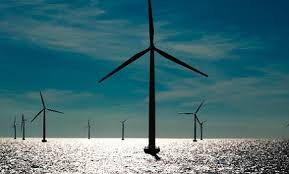
The London Array offshore wind farm smashed its previous monthly output record during December. The 175-turbine, 630-MW offshore array, in the U.K.’s outer Thames Estuary, generated 369,000 MWh of clean power in December 2015.
A recent news brief tells that the London Array offshore wind farm smashed its previous monthly output record during December. The 175-turbine, 630-MW offshore array, in the U.K.’s outer Thames Estuary, generated 369,000 MWh of clean power in December 2015, well in excess of its previous monthly best of 317,000MWh from November 2015.
Big numbers sound impressive but what was the Array’s capacity factor? The figure, which can tell us more about the Array, is a percent or ratio of a wind farm’s maximum capacity and depends on the wind in a particular location. For instance, onshore wind farms across Europe have capacity factors of about 0.25 to 0.30. In the North American Great Plains, the figure ranges from 0.3 to 0.4. On 80-m towers with newer equipment, the figure approaches 0.50 in good wind locations. An annual figure can be calculated from a year’s worth of wind data from a nearby met mast, and as you would expect, it will vary from month to month. Still, how did the London Array fare?
To calculate the monthly output of a turbine or wind farm and a particular location, use this equation:
Pp = Cr x N days/month x 24 hours/day x Fc
Where Pp = power production, Cr = full rated capacity, and Fc = capacity factor.
For the London Array in December, the equation would read:
369,000 MWh = 630 MW x 30 days x 24 h/day x Fc
Solving for Fc gives:
Fc = 369,000 MWh / (630 MW x 30 days x 24 hours/day)
= 0.81
That is a remarkable figure, the highest I have heard of and easily approaching that of some nuclear and fossil fuel plants. It means that for the month, the offshore wind-farm was working at 81% of its maximum capacity. The figure tells that the Array planners certainly picked a good location and it validates the effort to place wind farms offshore.
–Paul Dvorak
Filed Under: News, Offshore wind





Interesting. 0.81 or 81% is unbelievable. As you have based on 30 days and there are 31 days in December, presumably the capacity factor would be less